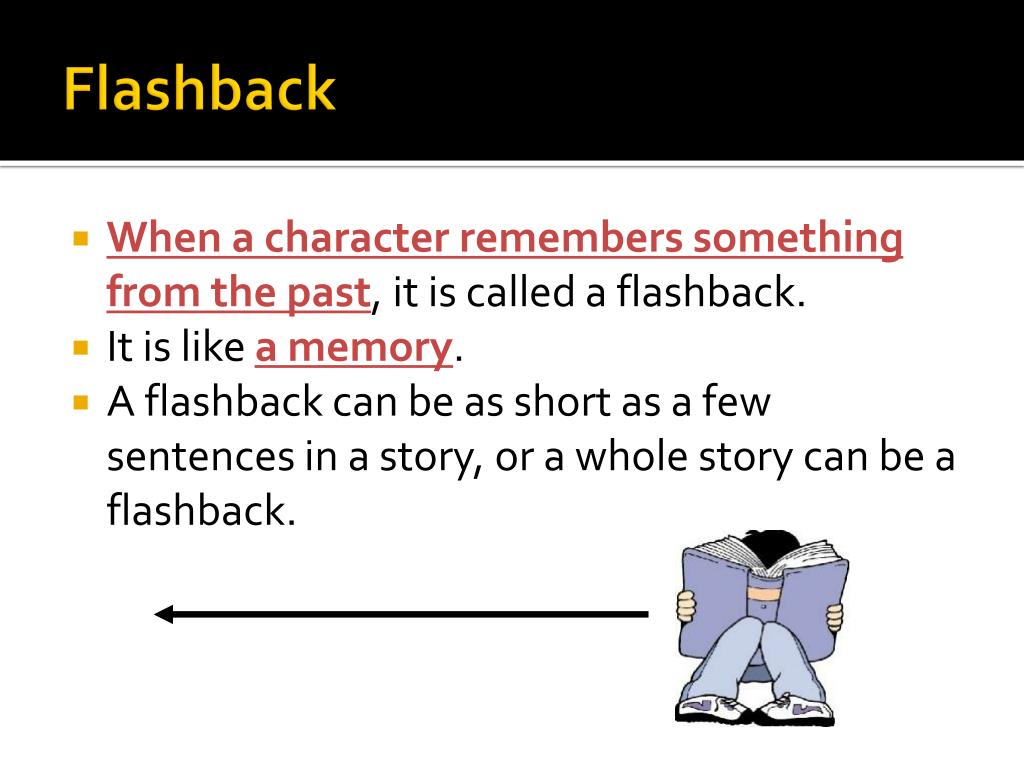
I lunge and dig into his skin, tearing at his eyes with claws I didn’t know I had. I press my hands into the floor and push up as hard as I can. My fingers were white, gripping at the cracks on the floor. I was on my stomach and he was on top of me and I couldn’t look at him if I tried. “Just look at me,” the man said through gritted teeth. I was pinned to the ground in the dim room, fingernails digging into the wooden floorboards, red light blinking in front of my face. “Maya, wait up!” Andre is buttoning his shirt and running toward me barefoot. I step onto the sidewalk and start down the street. The warm sun and humidity hit my face like opening a dryer mid-cycle. Here’s an excerpt from the short story, Wolverine Frogs (TW: sexual assault): I mentioned above that sometimes you may want to confuse your audience. Let’s look at a couple of examples to see how they’re woven into scenes without pulling the reader away from the present for a significant amount of time. The more common flashback in novels and short stories is the in-scene flashback. These scenes are much longer and cover a lot more ground than an in-scene flashback. Something to trigger the beginning of the flashback, something to trigger the end, and likely scene breaks or a chapter change to separate it from the original timeline.
#FLASHBACK EXAMPLES THAT ARE SHORT FULL#
There are essentially two main types of flashback: A full flashback scene or a brief in-scene flashback.įor a full flashback, you need transitions, as mentioned above. Don’t make them do extra work for no payoff.

Like we said, it takes effort on the reader’s part to keep up with a flashback. Your flashbacks should carry weight-they shouldn’t just be exposition or a convenient way to pass information to your reader. If you’re sure the flashback is relevant and necessary, then you should be able to hit your point quickly and get out before it drags on for too long. You don’t need pages and pages of backstory-most of that should be worked into your regular timeline. Flashbacks are a need-to-include element in a written story because it takes more effort for the reader to settle into a flashback scene.Ĭarefully critique your flashback scenes for necessity and relevance. Is it crucial for the reader’s understanding? If no, don’t use it.ĭoes it make sense without it? If yes, don’t use it.Ĭan you weave the information into a regular scene instead? If yes, don’t use it #3 – Use the flashback sparinglyĪnd use your flashbacks sparingly. If you’re using a flashback, employ the same rules we mentioned for prologues: It’ll make your story more difficult to follow. #2 – Make sure the flashback is relevant and necessaryĭon’t hop around in your timeline for no reason. On the flip side of that, negating the transitions is a great way to intentionally make your audience uncomfortable or confused. Clear edges of the flashback gives your reader the stability they need to follow along. Transitioning back out of it can be as simple as someone in the present-time saying, “Hello?” You need something to jog the character back into the present.


This provides a logical bridge from the main storyline to the flashback. A great way to do transition is with a trigger, like a character hears a word, sees a flash of something familiar, smells, tastes, feels something that reminds them of the time they’re flashing back to. Just like a regular scene, write transitions to help it flow as a cohesive piece. You don’t want a flashback out of nothing. Smoothly transition into and out of your flashback. Save your flashbacks for a point in the story when your readers should be invested enough to time travel. Are they invested enough in the story to hop back in time with you? If your flashback is longer than a page or two, it may turn readers off if they haven’t grown attached enough to your characters and your story to care about extra information, like a flashback. If you throw in a long flashback too early in the story, you run the risk of your reader not being interested.

Here are five tips to help you write flashbacks. So what’s the best way to write a flashback? When do you use them, when do you not use them, and how do you use them well? Let’s look at ways to use flashbacks effectively. They’re either too frequent, overdone, too long, irrelevant, or awkwardly shoved into a scene they have no business interrupting. I see a lot of inexperienced writers mess them up big time. Most prologues are flashbacks.įlashbacks can be tricky little guys to nail, especially in written works. Flashbacks are simply flashes back to an earlier event in a story’s narrative.


 0 kommentar(er)
0 kommentar(er)
